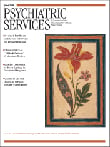Somatoform Disorders: A Medicolegal Guide
Michael Trimble's Somatoform Disorders is packed with a lot of useful information for both clinicians and lawyers dealing with personal injury claims. The book contains current knowledge from scientific data. It is easily readable and simple enough for a person with a medical background. Although the book is intellectually stimulating, there is an inherent danger in how the clinicians and legal professionals who read this book would perceive and interpret the data, given that clinicians see various shades of grey and lawyers are often trained to see only black or white and weave the evidence to suit their bias.
The first chapter deals with a historical review of hysteria, the historical name for somatoform disorder. This chapter describes the changes in psychiatric nosology from the wandering womb noted by Greeks and Egyptians over 2,000 years ago to witchcraft in the 16th century and further moving on to concepts of Freud, Charcot, war neurosis, and railway spine. The next chapter, which deals with classification, describes the view from DSM-IV-TR and ICD-10 . Because courts in the United Kingdom prefer DSM diagnoses in cases involving somatoform disorders for unclear reasons, there is ample information on the interaction of axis I and axis II diagnoses. Based on the social variability of behaviors related to illness, "abnormal illness behaviour" is a term introduced by Pilowsky. A nice paradigm combines the personality types in the classification.
The next two chapters deal with clinical presentations and malingering. Trimble includes a thorough analysis of research findings from conversion disorders and symptoms and classification of Briquet's syndrome. In the clinical picture, pain syndromes, chronic fatigue syndrome, fibromyalgia, dystonia, whiplash injury, and occupational disorders of the upper limb are all described concisely. Although clinicians suspect malingering, most often they are reluctant to label this condition. The chapter on malingering not only provides examples of malingering from historical writings but also differentiates them in a superb manner from factitious illness, Munchausen's syndrome, pseudologica fantastica, and lying. This is one of the best written chapters in the book.
We are all aware of the pivotal role played by memory in medicolegal settings. The classification of memory, false memories, assessment of memory, and malingering and memory are dealt with in outstanding depth, with emphasis of the unreliability of repeated recall of a story that gets more distorted with retelling. However, memories recovered by hypnosis that become important in legal matters are not mentioned. Several rating scales for assessment of somatoform disorders and various treatment options are included, but the author impresses on readers in no uncertain terms the paramount importance of clinical skills with intimate knowledge of psychiatry, neurology, and general medicine in evaluation of patients with complex disorders.
In the last two chapters, the author articulates current knowledge of the theories of mechanisms involved: from biologic studies, psychological underpinnings, and sociocultural influences in one chapter and the causation of symptoms in law, medicine, and psychiatry and the question of consciousness in the other.
Chapter 7, which deals with somatoform disorders in a medicolegal context, primarily addresses application of law in the United Kingdom. The author emphasizes the unique qualifications of psychiatrists in medicolegal matters compared with psychologists. However, the focus on British laws may prevent widespread use of this book as a guide on this side of the Atlantic.
Overall the scientific merits of this book make it a worthwhile guide for clinicians.



